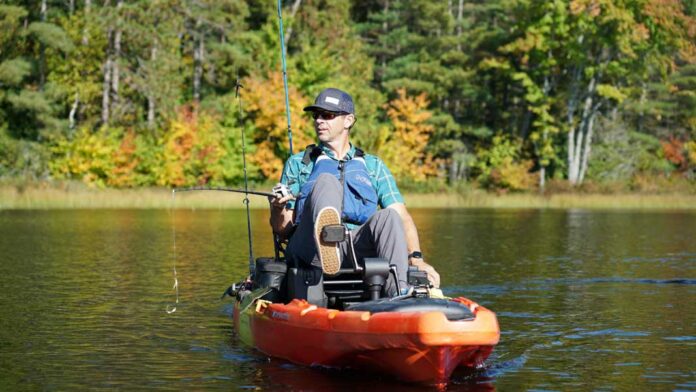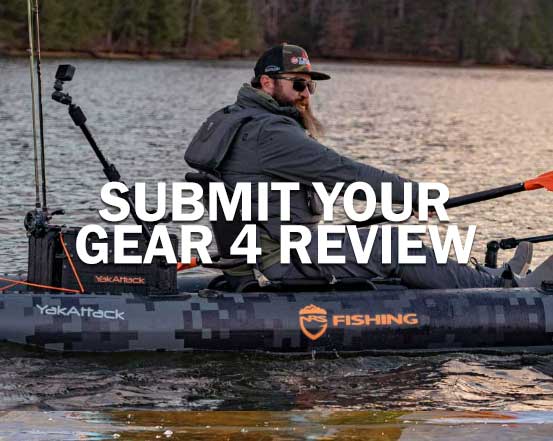If you are a kayaker who is interested in fishing, or an angler who wants to give kayaking a whirl, then investing in a solid fishing kayak will bring a magical synergy between these two pastimes.
There's something extra special about being right at water level as you reel in a long-awaited catch, and that experience is even more intimate when in a self-propelled craft. Fishing kayaks come in schools of different shapes, sizes, and styles. I'm here to help you tackle the unknowns when selecting a fishing kayak.
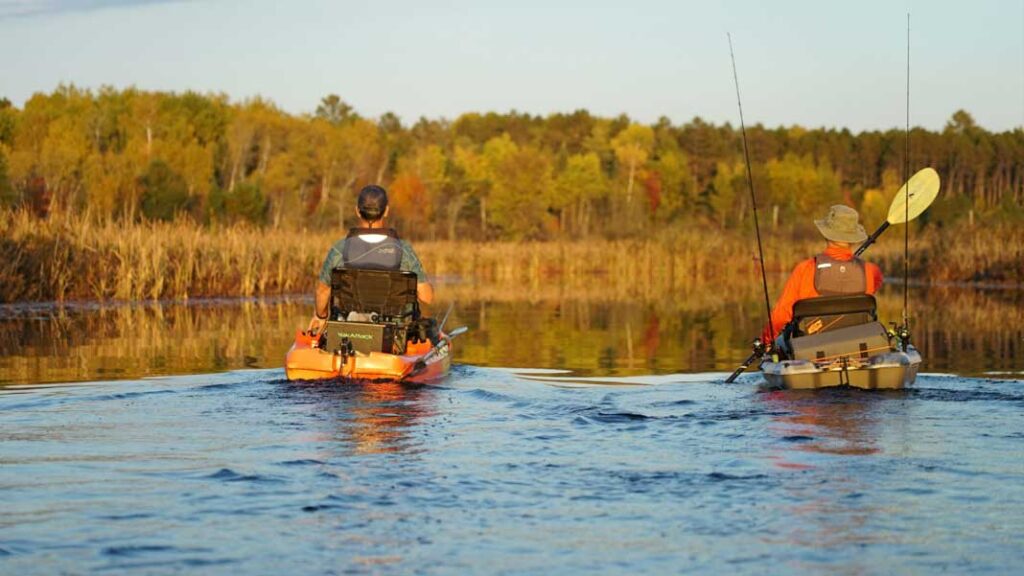
What is the best fishing kayak?
One of the key decisions to make when purchasing a fishing kayak, is whether to go with a sit-on-top, or a sit-inside model. Sit-on-top kayaks have become the norm for serious anglers, and for good reason.
Sit-on-top kayaks offer a large platform that is great for moving around, handling fish, decking out with accessories, and for standing up. Standing gives you a better view of what lies beneath the surface, and allows you to cast more freely. This set-up brings into play some of the advantages of a powerboat experience.
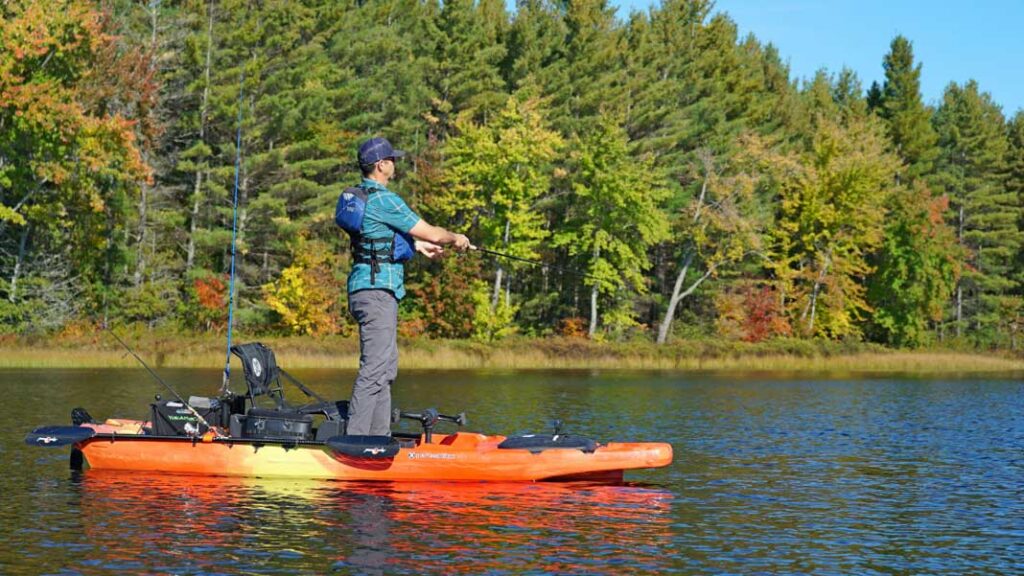
Another advantage of a sit-on-top kayak is that it comes with scupper holes. These ensure that any water that comes onto the boat drains back out again without issue. In some cases, these scupper holes can also be used to rig up a fish-finder. The next benefit comes in the form of the generous rear tank well.
This rear tank well on a kayak is perfect for stashing a tackle box and any other gear that you want quick-access to while on the water. Sit-on-top kayaks open the door to a pedal system, which is another exciting type of fishing kayak that we'll get into shortly.
Sit-inside kayaks may not be as popular when it comes to fishing. These fishing kayaks still offer some advantages that are worth exploring. First of all, they are significantly better performers when it comes to the actual paddling.
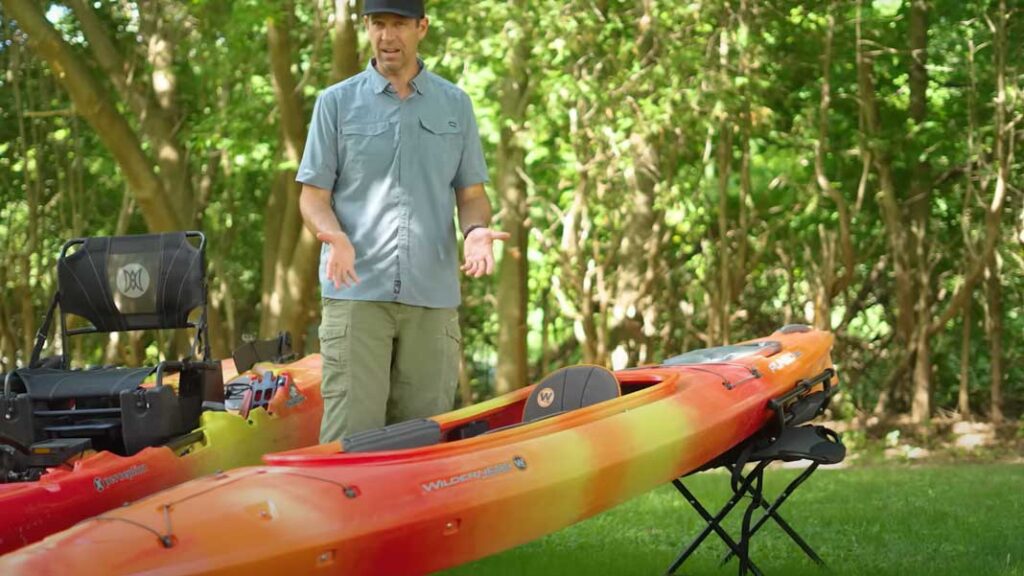
If you have some distance to travel in a kayak before casting, a sit-inside kayak might be your best option. If you want something that can handle pure-paddling adventures from time to time, then this type of fishing kayak may appeal to you. Sit-inside kayaks use significantly less plastic. These fishing kayaks are much lighter than sit-on-top kayaks, and therefore easier to transport.
The downsides are that sit-inside fishing kayaks aren't as customizable. You usually can't stand up in a sit-inside kayak because they are less stable. The sit-inside kayaks are harder to get back in if you happen to flip over and take a swim.
Is it worth getting a pedal kayak?
If you've chosen to go down the road of sit-on-top kayaks, then consider a pedal kayak. Now, pedal kayaks have been around for ages. Their benefits for anglers is what led to their recent surge in appeal.

The most obvious advantage of a pedal kayak is that it frees up your hands. This is important for casting, even while moving around. Pedal kayaks also tend to travel faster than if paddling the same type of craft. When you snag that photo-worthy catch, you don't have to worry about fumbling with a paddle. You should still have a paddle on board in case your pedal drive gets a little wonky.
The most noticeable downside of pedal kayaks is how much they cost. A pedal fishing kayak will cost about $1,500 (USD) on average. This is more than a sit-inside kayak will cost of a similar class. But despite the added cost, most anglers who make the switch never go back to strict paddling.
If you want to delve deeper into one of my favorite pedal kayaks, check out my Perception Showdown 11.5 Review.
Do inflatable kayaks make good fishing kayaks?
Many paddlers may lack the necessary storage capacity or means of transportation to handle a big, heavy, sit-on-top fishing kayak. So the natural choice becomes a portable kayak, either folding or inflatable. You can absolutely still fish from these platforms, it will just be more of a minimalistic experience.

I recommend going with something that prioritizes stability over paddling performance for an inflatable fishing kayak. This will come in handy while wrestling with your prize. In terms of inflatable kayaks, I would also encourage you to invest in something that has a drop-stitch construction. Ensure the inflatable kayak is free from a fabric coating. Fishing hooks will be like kryptonite to cheaper inflatable kayaks. High-quality inflatable kayaks will be able to stand strong against potential punctures.
Some Key Features of a Fishing Kayak
Once you've sorted through the basic categories of kayaks (i.e. sit-on-top vs sit-inside, hardshell vs portable, pedal vs paddle) it is time to hone in on more nuanced features. If you've been following along with PaddleTV then you know that I love a comfortable seat.
And since anglers tend to be out on the water much longer than recreational paddlers, a good seat really comes into play. For example, in my Perception Showdown 11.5, the high sitting position establishes a natural posture where my feet are below my butt. Having a high seat also makes it easier to shift in and out of a standing position.
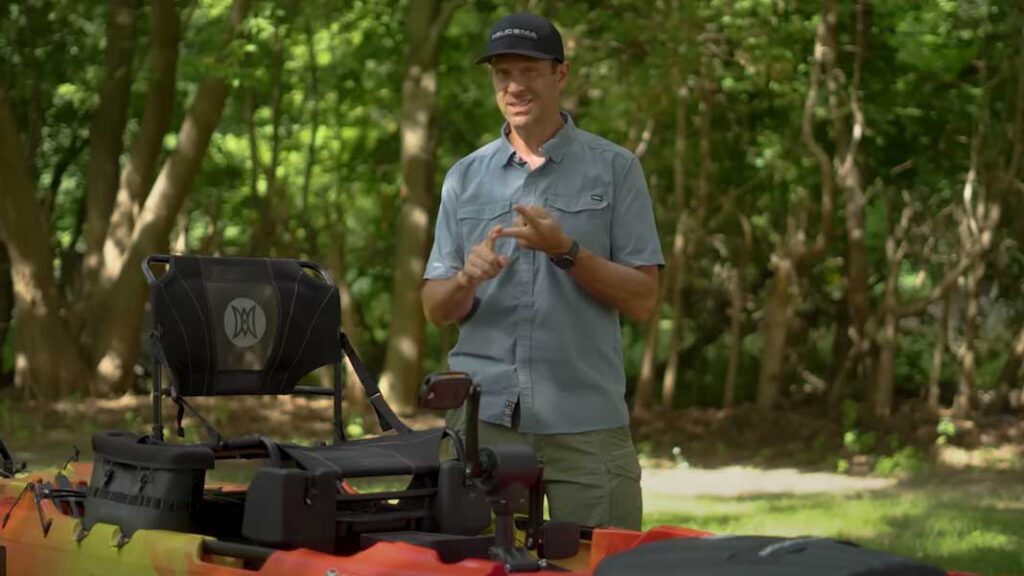
Being able to stand up in your kayak isn't required for a good fishing experience, but the enhanced view will improve your success rate, and being able to stretch out your legs will help combat those cumulative aches. So aside from a seat that can switch to a high-position, traction pads are a simple feature that make standing a much easier task. These also serve to dampen the noise while you're shifting about, so as not to spook the fish.
Some anglers live and die by their electronics. This is where pedal kayaks shine brightest, since gear tracks can be utilized on the sides of the boat. If paddling, then these would simply be an impediment during every stroke. Now, there are always creative ways to accessorize, but for maximum deck space and accessibility, pedal kayaks can't be beat.
Buying the right fishing kayak can be an intimidating journey, with lots of crossroads along the way. So I hope this article helped point you in the right direction. At the end of the day, sometimes trial and error has to be part of the equation. Fishing kayaks can be quite expensive, but if you get the right one, it may last you a lifetime. And if you find yourself craving an upgrade, there is a huge second-hand market out there that will take some of the pressure off.
Subscribe to our newsletter
If you want to stay up to speed with all our latest gear reviews, how-to breakdowns, and personal adventures, then be sure to subscribe to the In4Adventure newsletter.



